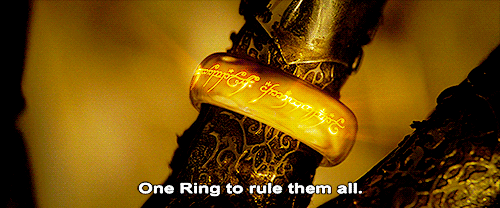
ELGL Contributor Patrick Rollens is back again to share another tip for local governments delving into social media or tying to expand and improve their social media impact. For a background check on Patrick read, 50 Nifty Patrick Rollens; take a look at the recap of his webinar, Social Media for Local Government; and read his last article, Buying into Social Media. This time his advice: be a control freak. Read on to find out more.
Be a Control Freak
 Just about the only things you can control on social media are the particulars of your organization’s involvement. You can’t control who trashes your streets and sanitation department on Twitter, or who posts court papers from your mayor’s decade-old divorce on Facebook. But you can control how your organization implements its social media strategy on a day-by-day basis, and that’s what I want to talk about here.
Just about the only things you can control on social media are the particulars of your organization’s involvement. You can’t control who trashes your streets and sanitation department on Twitter, or who posts court papers from your mayor’s decade-old divorce on Facebook. But you can control how your organization implements its social media strategy on a day-by-day basis, and that’s what I want to talk about here.
Avengers Assemble
 First you’ll need a team. This can be as simple as a tech-savvy part-time employee in the manager’s office, or it can be as robust as a full communications department dedicated to getting the message out across a broad array of platforms. Regardless, you’ll want to identify who’s on the team from the start.
First you’ll need a team. This can be as simple as a tech-savvy part-time employee in the manager’s office, or it can be as robust as a full communications department dedicated to getting the message out across a broad array of platforms. Regardless, you’ll want to identify who’s on the team from the start.
The team should have access to login and password information for each social media account. At the Village of Oak Park, the communications department keeps that info safe and internal – but in a pinch, both the Village Manager’s Office and IT can access this information, too. Consider adding a failsafe like this to make sure that someone from your organization can leverage social media in a real emergency.
Along with a team, you’ll need a social media policy. For us, this is a one-page document that outlines how and when we’ll use each of our social media channels (Facebook, Twitter, etc). Your policy should answer any questions that might come up from supervisors or elected officials. Who gets to post? Will you follow/friend other accounts? Will you retweet from local businesses? Will you use the account to support a slate of candidates during election season? Will you delete comments or hide embarrassing posts? I’ll go into more detail about this in a future column.
One Account to Rule Them All
In my recent webinar for ELGL, I made what I hoped was a strong case for having just one account per social media platform to represent your organization. It’s very important to have a single point of contact on each channel. The reasons for this are manifold; I’ll use Twitter as an example.
- Once you create multiple accounts (for example, separate Twitter handles for the police department, fire department, health department, etc) it becomes difficult to say no to additional requests. If there’s one thing I’ve learned in government, it’s that each department thinks it is doing the most important, vital work for the organization at any given time – and now they’ll want a social media mouthpiece to trumpet their success. Just say no!
- With additional accounts, you’re asking your audience (read: local residents, business owners, parents, etc) to split their attention. Remember, these busy folks are willing to give their local government just a few minutes each day. In some cases, they’ll see just one tweet in a given 24-hour period. It may look great internally to have accounts dedicated to a wide array of services, but the general public doesn’t care – they just want relevant information. Make sure they see only the best, most important stuff in a given day by directing them to one central account.
 Multiple accounts are hungry! Each one needs daily content or else it will shrivel and die on the vine. It might seem like a great idea to launch a Twitter account dedicated to the farmers market in the summer, when there’s news to report each week – but in mid-December you’ll be staring at a lonely Twitter feed that hasn’t been updated since October. Instead, request that all departments route their publicity requests through the main account. This enables you to cherry pick the best content and schedule the rest of the info on evenings and weekends. Everybody wins!
Multiple accounts are hungry! Each one needs daily content or else it will shrivel and die on the vine. It might seem like a great idea to launch a Twitter account dedicated to the farmers market in the summer, when there’s news to report each week – but in mid-December you’ll be staring at a lonely Twitter feed that hasn’t been updated since October. Instead, request that all departments route their publicity requests through the main account. This enables you to cherry pick the best content and schedule the rest of the info on evenings and weekends. Everybody wins!
Go the Source
 You have a responsibility to your users to make sure the information you send out is correct. This becomes a little more complicated when well-intentioned departments start sending out nebulous, second-hand information for use on social media. For example, let’s say your health department emails you some information about flu vaccinations, and it’s pretty clear that they copy-pasted the info from some website. Don’t just mindlessly regurgitate the info onto your organization’s Facebook page – spend a little time googling it to find the original source, or ask the health department where they found it. Chances are the info came from the Centers for Disease Control, but you won’t know that until you start googling. Don’t worry about stepping on anyone’s toes — it’s much better to rewrite the blurb and include a link back to the original source.
You have a responsibility to your users to make sure the information you send out is correct. This becomes a little more complicated when well-intentioned departments start sending out nebulous, second-hand information for use on social media. For example, let’s say your health department emails you some information about flu vaccinations, and it’s pretty clear that they copy-pasted the info from some website. Don’t just mindlessly regurgitate the info onto your organization’s Facebook page – spend a little time googling it to find the original source, or ask the health department where they found it. Chances are the info came from the Centers for Disease Control, but you won’t know that until you start googling. Don’t worry about stepping on anyone’s toes — it’s much better to rewrite the blurb and include a link back to the original source.
That’s a Wrap
Social media may be a free-wheeling 24/7 conversation, but success only comes through painstakingly careful management of your organization’s presence. Luckily, your audience never has to know about the anguish and teeth-gnashing that takes place behind the scenes – they only care about the information at their fingertips each day. Make a policy, stick to your guns, and have fun out there!


